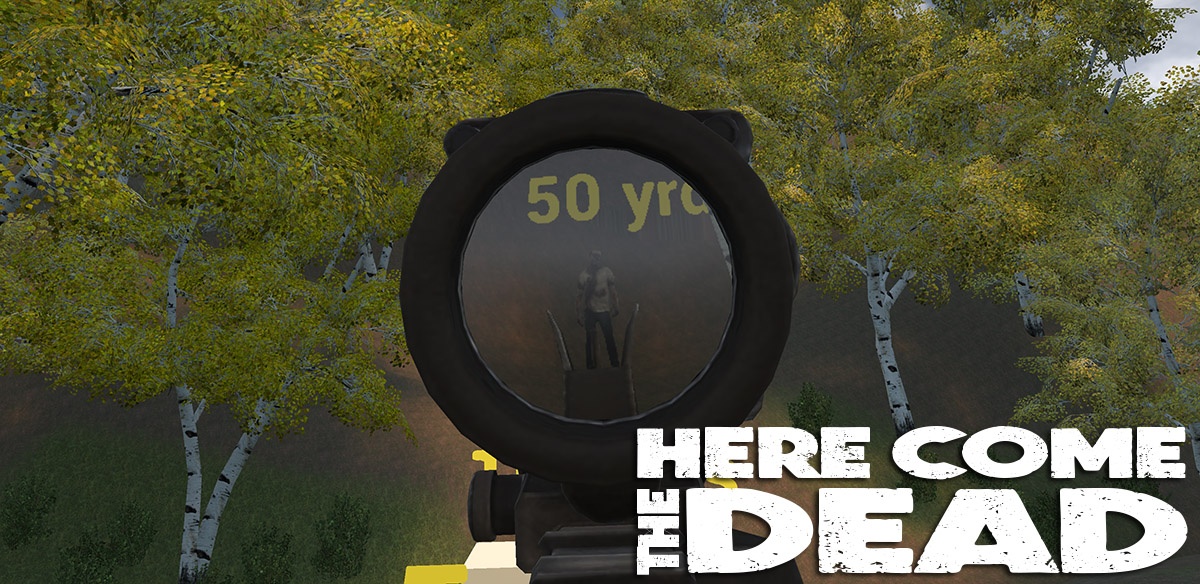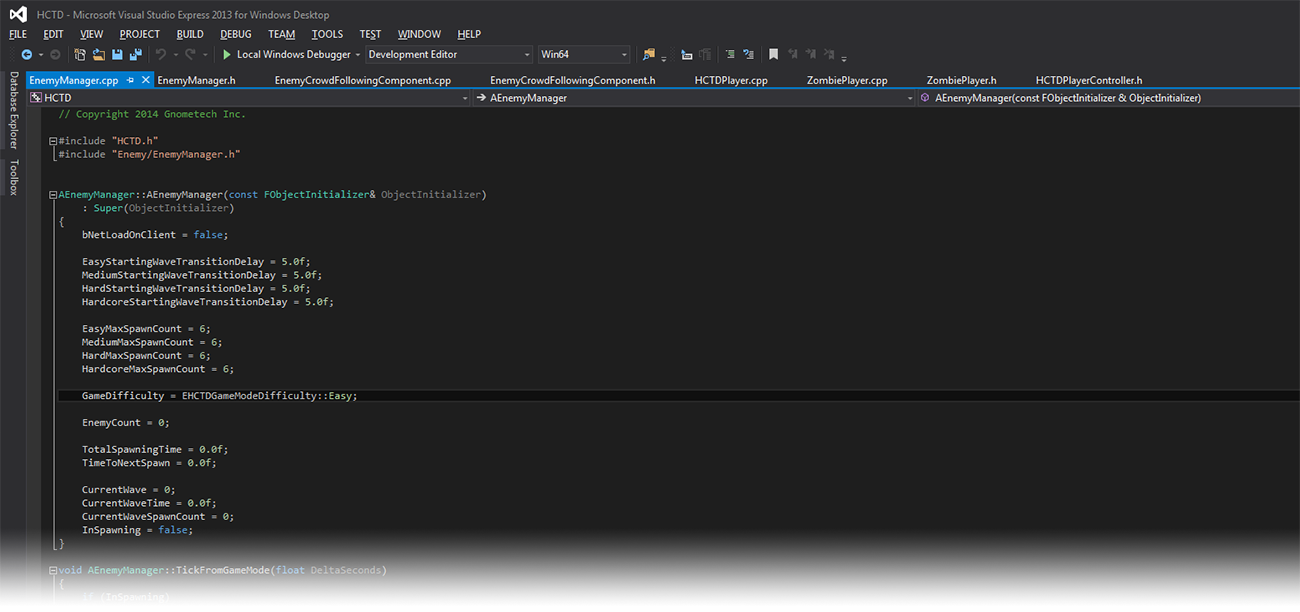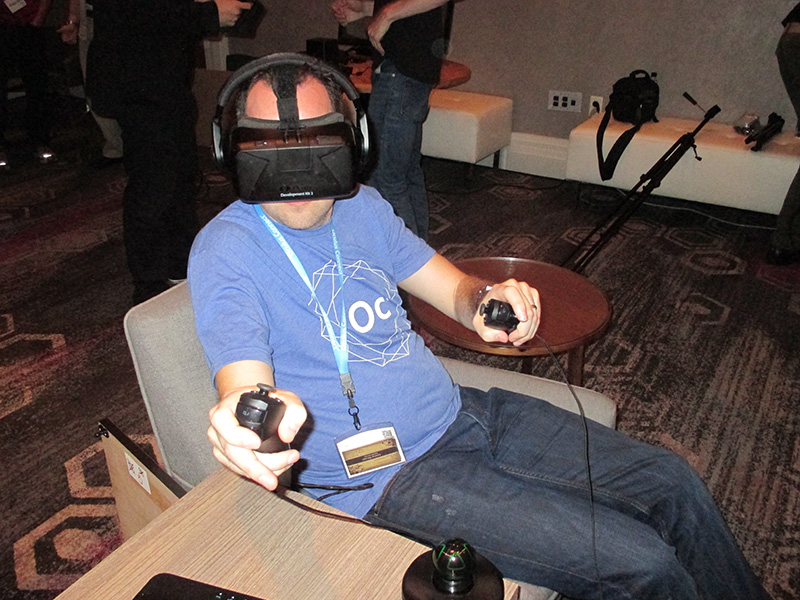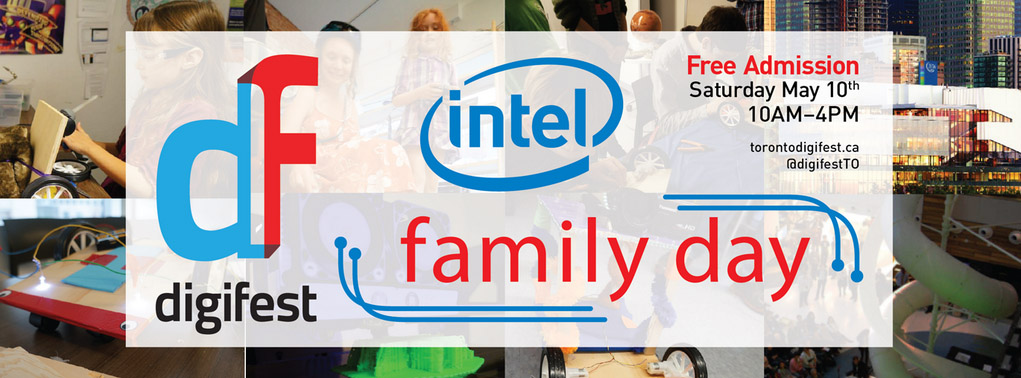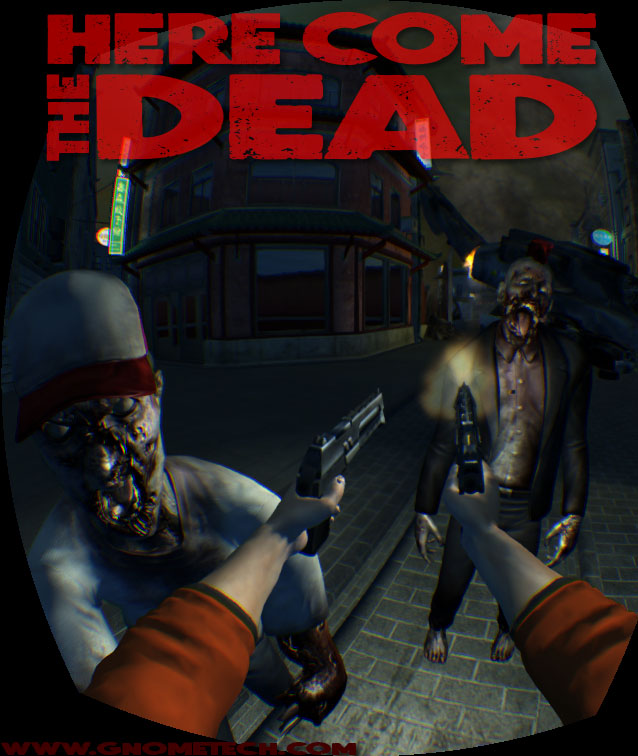Look out! Zombies on the hill at 50 yards!
February and March have seen steady progress on Here Come The Dead. There is now an assault rifle option in-game that the player will have to unlock. When fired with one hand it jumps around a lot, requiring frequent aiming adjustments with your actual hand (1:1 hand controls with the Razer Hydra, don’t forget!). Holding on with your second hand steadies the rifle, making your shots more consistent. And as you can see in the above image, there is also a working scope for the rifle — again, something that will likely need to be unlocked. Being VR, you need to actually hold the scope up to your eye in order to use it.
I’ve also been mocking-up a firing range where the player may test out each of their weapons. Normally this area would be undead-free so the player can focus on weapon handling rather than staying alive. That’s what the rest of the game is for! This level will likely be completely revamped for the game itself, and includes a few surprises. I would also imagine playing it co-op could be a lot of fun, just hanging out with your buddy and trying out various things, talking over positional voice chat…
Along with these changes is a move over to a full data model for the game. This means that weapon, enemy, and even player attributes are determined based on lists of data rather than hard-coded into the game itself. This makes it much easier to tweak values, especially while trying to balance the game.
- Dave

